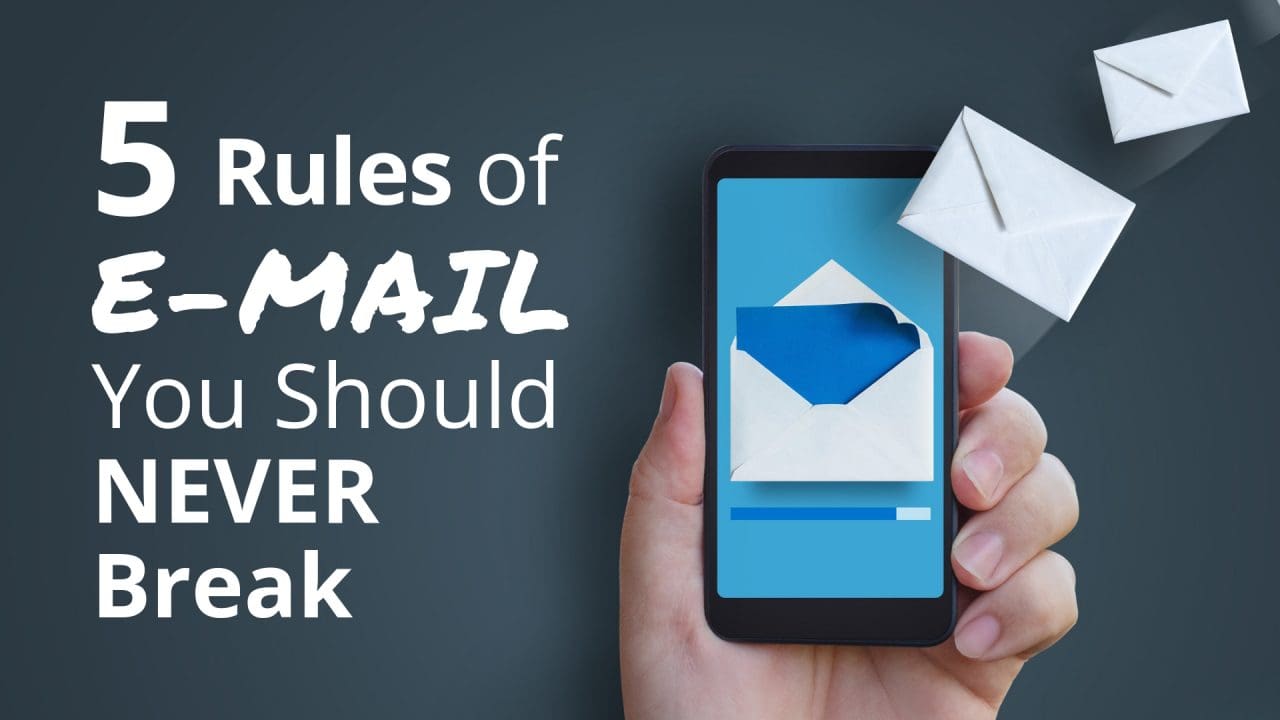5 Rules of Email You Should Never Break

I’ve read a few articles recently about the Do’s and Don’ts of how to write an email to get your message well received. To save you time, I’ve distilled most of these into 5 main “Rules.”
Okay… I can hear you now, “Who do you think you are telling me what rules to break or follow? I’ve done quite well for myself breaking the rules!“
I get it. I break the rules myself sometimes. With that said…
WARNING: Breaking these five rules could be harmful to the health of your relationships with prospects, clients, colleagues, and friends.
The 5 Rules You Should Never Break When You Write an Email
1. Never Ever Send Emails with Negative Emotion
David Swink provides this great advice in his article in Psychology Today:
Consider this: Compose your email recognizing that the receiver may not be in the same mood or emotional state as you. Try to imagine how the person receiving the email could interpret it.
Insight: When we read an email, we attempt to read intention and tone into the words. If the message is ambiguous, many people will automatically read the most negative emotions and intentions into it.
If you have a minute, check out this related article by David Goleman in the New York Times.
Once you detect negative emotion in an email you are reading or writing… STOP! Use the email to schedule a meeting: phone, in-person, or online.
2. Never Send Long Emails
Why is this a rule not to be broken? Because long emails either don’t get read at all or merely skimmed – rendering them ineffective at best.
Save your long explanations, laundry list of solutions, and personal bio for an attachment, link, or when you’re able have a real conversation.
If you find yourself going a little long, but simply MUST put everything in the email, break it up with subheads.
Always write your email assuming it will be read first on a smart phone. Why? Because over 2/3’s of emails are read that way. Pay close attention to the first 80-100 characters of your email, because that’s what they will see on their smart phone. Don’t waist this valuable real estate. Get to the “good stuff” right away.
If you want to learn more about how to write mobile-friendly e-mails, check out this link: 5 Simple Tips for Mobile-Friendly Emails
3. Never Send Bulk Emails to Clients with Everyone Listed in the To: or Cc: Fields
Don’t you just hate it when you go to reply to the sender of an email and a huge string of emails shows up? First of all, it’s not a good idea to show your clients the names of all of your other clients. Second, it’s annoying to the entire group when all these unwanted emails start filling up everyone’s Inbox. Learn to use the Blind CC (Bcc).
4. Don’t Send Emails in ALL CAPS
Using CAPS in an email is considered shouting. I suppose some people think that it’s easier if they don’t have to capitalize the first word of each sentence. On the other hand, you don’t want to be shouting at people. Besides, words in all caps are HARDER TO READ. Caps should be limited to headlines and occasional words you might want to emphasize.
5. No Hiding Behind Email (and LinkedIn)
It takes almost no courage to send an email to someone – be it prospect, clients, or colleague. However, how many times have you taken this path of less courage, because you were simply “afraid” to pick up the phone and make a call – even if you knew the chances were high that you’d only be leaving a message?
I believe that using a combination of email, telephone, and sometimes regular mail is what it usually takes to get our message across to prospective and hard-to-reach clients.
Look – I could probably write a small book on how to write an email more effectively and how to mess it up as well (I’ve done both). For now, just follow the rules (not ALL the rules, just these rules).
You May Also Like:
The Importance Of Asking High-Value Questions (Updated: October 2018)





